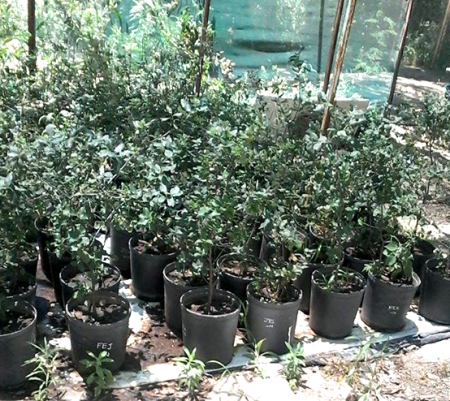
Objective:
The selection of forest species and the study of their behavior variability relative to the main environmental conditions change remains a major challenge. The aim of this study was to investigate the intraspecific variability responses of Quercus suber L. to drought conditions in order to determine the future sustainability of cork oak forest in Tunisia.
Context:
Drought is the major limiting environmental factor of cork oak species (Aranda et al., 2005). There is a strong debate about the potential to adapt to these new environmental conditions, which involves phenotypic plasticity at the individual level, and either genetic adaptation or migration at the population level. Consequently, it is necessary to characterize the adaptive genetic variation within Cork Oak populations. Seven populations were studied: MEJ (MejenEssef), FEJ (Feija), AS (Ain Snoussi), SDZ (SidiZid), JES (Djebel El Serj), KER (Kef El Rand) et JCH (DjebelEchaîd).
Contacts:
Sondes Fkiri, sondesfkiri@gmail.com, http://www.inrgref.agrinet.tn/
Hanene Ghazghazi, hanene8116@yahoo.fr, http://www.inrgref.agrinet.tn/
Boutheina Stiti, stiti_b@yahoo.fr, http://www.inrgref.agrinet.tn/
Zouhair Nasr, zouheirnasr84@gmail.com, http://www.inrgref.agrinet.tn/
Further information:
Aranda, I., Castro, L., Pardos, M., Gil, L., & Pardos, J. A. (2005). Effects of the interaction between drought and shade on water relations, gas exchange and morphological traits in cork oak (Quercus suber L.) seedlings. Forest Ecology and Management, 210(1-3), 117-129.